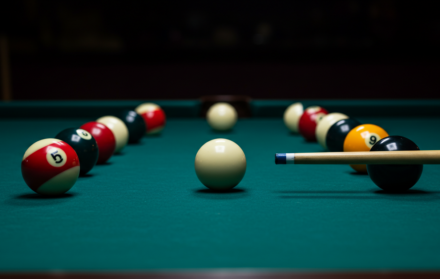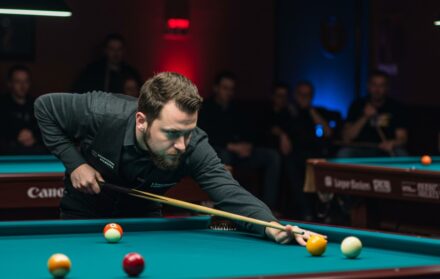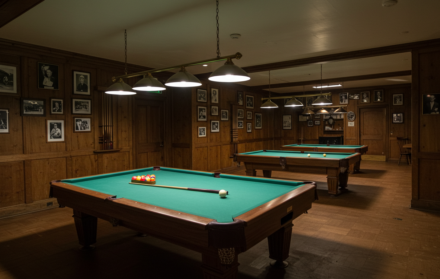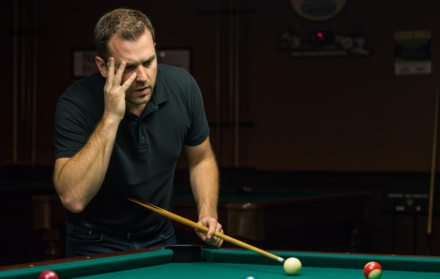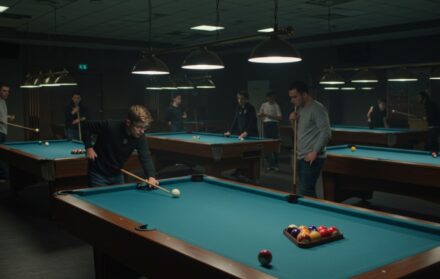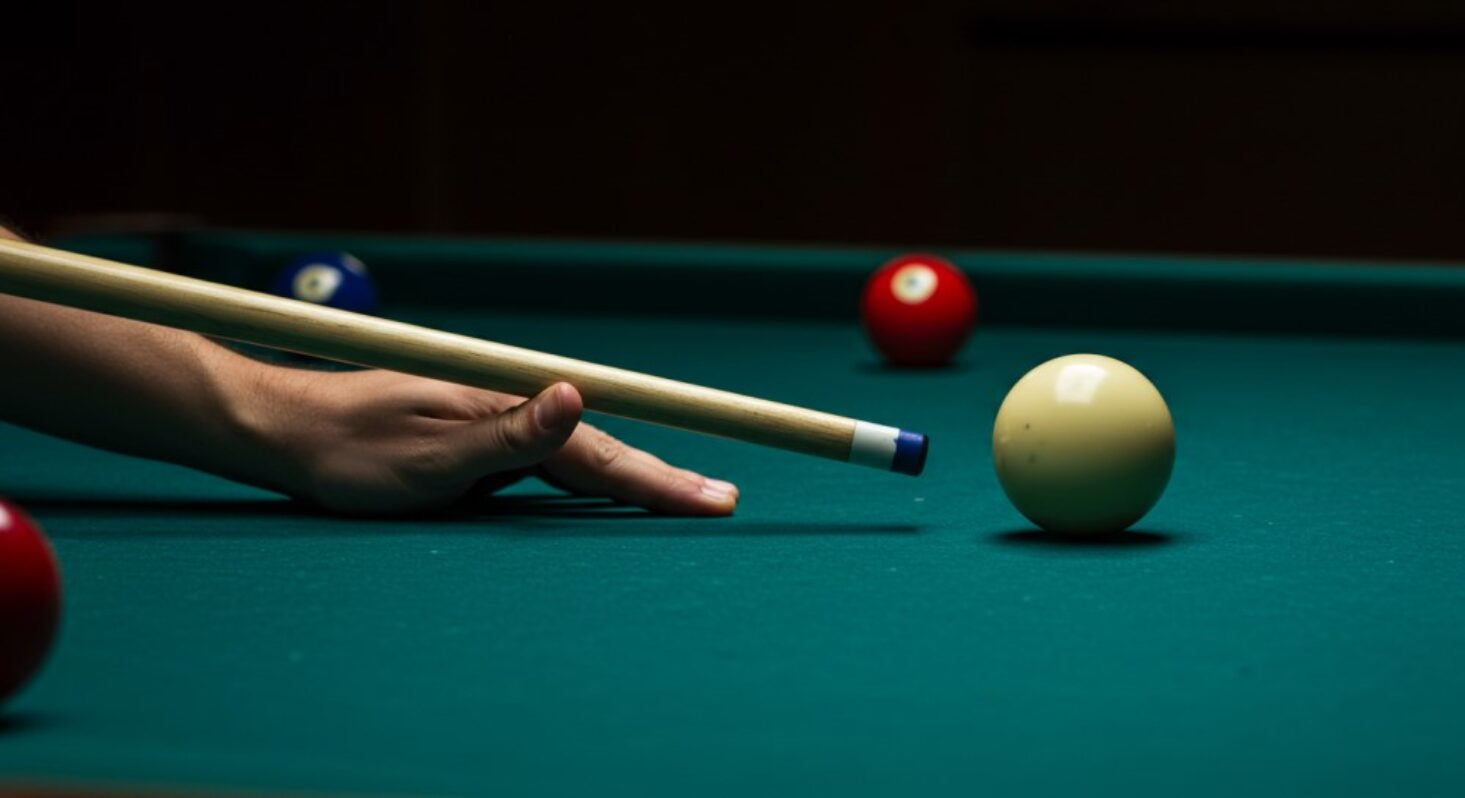
10 Tips to Improve Your American Pool Game
American pool might look effortless when the professionals run rack after rack, but any club player knows how brutally the table exposes small flaws. One careless lift of the head, a cue‑ball an inch out of position, and the simplest of clearances turns into a scrapyard.
If you have ever finished a session feeling that you played ‘all right’ yet still lost frames you should have won, the problem is not your cue—it is the absence of method. The good news is that a handful of focused adjustments can raise your potting percentage, sharpen your safety play, and reduce mental wobble under pressure.
In this guide, we break down ten practical tips to improve your American pool game that speak directly to club‑night reality: no mystical guru phrases, no impossible drills, just clear, repeatable steps that will make you a tougher opponent every single visit to the baize.
Whether you own a table at home, hire one by the hour, or hustle coin‑op bar boxes at the weekend, dedicate a little disciplined practice to each tip and you will soon see racks melting away in your favour. The journey starts here; chalk up and commit to purposeful, measurable progression today.
1. Build a Rock‑Solid Stance and Bridge
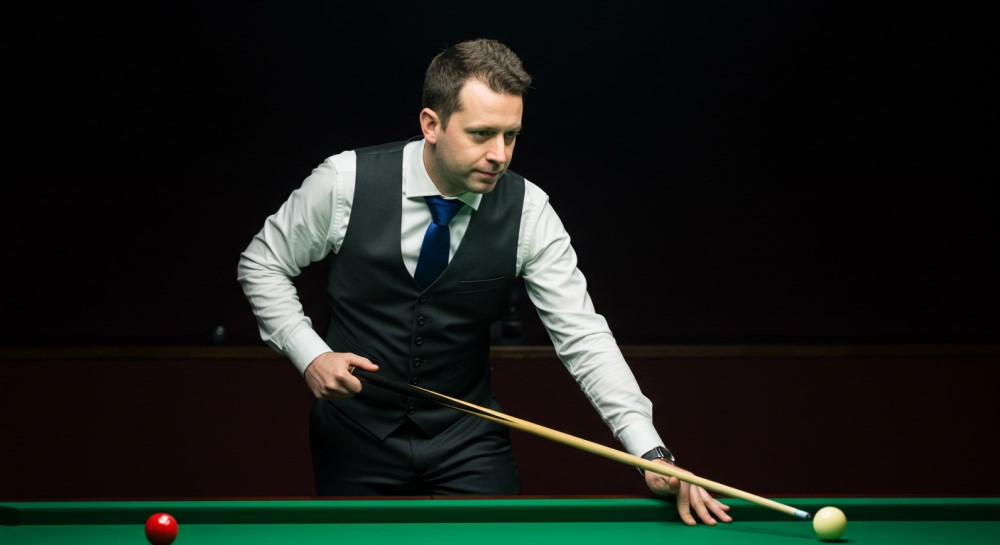
Before worrying about fancy spin or power breaks, nail the physical foundation that underpins every accurate stroke.
Finding Your Natural Balance
-
Foot width: Start with your feet shoulder‑distance apart. If you feel cramped when reaching for shots, nudge the rear foot back another half step.
-
Lead foot angle: Point your front toe roughly along the line of aim. A slight outward turn (10–15 degrees) often settles the hips, reducing unwanted sway.
-
Weight distribution: Aim for a 60/40 split, with more weight on the front foot. This lets your rear heel lift slightly when leaning over, providing flexible reach without losing balance.
Perfecting the Bridge
-
Open bridge: Flatten your hand, spread fingers wide for stability, and create a V‑groove between thumb and forefinger. Ideal for stun shots, delicate rolls, and when the cue ball sits close to a rail.
-
Closed bridge: Curl your index finger over the cue for extra security on long power shots, break shots, and when using heavy draw.
Practice drill: Spend ten minutes setting up your bridge on a training rail, repeating a slow feather‑stroke motion while ensuring the cue travels smoothly through the V. Film your hand overhead; look for any twitch or thumb lift, then adjust until the cue glides like it’s on rails.
A fluid stance‑bridge combo turns every pot into a familiar motion rather than an ad‑hoc guess. Consistency here transforms the rest of your cueing game.
2. Groove a Repeater‑Straight Cue Action
A textbook stance is useless if your cue wobbles during delivery. Straightness is the secret sauce.
Mechanics of a Laser‑Line Stroke
-
Dominant eye alignment: Whichever eye you naturally sight with should sit directly above the cue. Close one eye at a time to check alignment.
-
Grip pressure: Imagine holding a tube of toothpaste—firm enough to keep hold, light enough not to squeeze paste. Tight grips restrict the backswing and often pull the cue off‑line.
-
Elbow hinge: In the forward stroke, your elbow should act like a pendulum pivot, dropping via the triceps while the shoulder stays mostly still.
The Stop‑Shot Benchmark
Set the cue ball on the head string and the object ball on the centre spot. Deliver a centre‑ball strike so the cue ball stops dead after contact. Repeat thirty times, noting how often the cue ball really stops without drifting. Zero drift equals centre‑ball perfection.
Log your performance in a notebook: “Stop‑shot drill—27/30 dead stops.” Revisit weekly, aiming for incremental improvement. Quantifying progress keeps motivation high and exposes emerging flaws early.
3. Read Angles Like a Chess Grandmaster Reads Boards

True cue artists see the entire table one shot ahead and two rails into the future. Angle literacy comes from deliberate study.
Three Cornerstone Concepts
-
Ghost‑ball method: Envision an invisible cue ball touching the object ball at the intended contact point. The real cue ball must travel through that ghost position.
-
90‑degree stun rule: A centre‑ball stun shot sends the cue ball off at a right angle. Use this predictable ‘L‑shape’ to plan tight shape routes in crowded tables.
-
Natural rolling line: Topspin lengthens the cue‑ball path after impact—think of it as ‘smoothing’ curved routes. The sooner you recognise these arcs, the fewer heroic back‑spin rescues you’ll need later.
Everyday Table Geometry
-
Diamond reference: Most American pool tables use a diamond sighting system. Divide each long rail into quarters visually; experiment banking object balls off the centre diamond to the opposite corner.
-
Rail‑first kicks: Practise hitting object balls after rail contact. Not only does this save frames when you’re snookered, it deepens instinctive judgment of rebound angles.
Tip: Sketch angles on a notepad after practice, labelling cue‑ball path, object‑ball path, and cue‑ball finish. Translating shots into diagrams cements geometry in your memory.
4. Lock In a Bulletproof Pre‑Shot Routine
A repeatable routine is your anti‑panic mechanism. It activates auto‑pilot when tournament nerves surge.
Four‑Step Model
-
Survey: Stand tall; chalk the tip while deciding if you’ll attack, play safe, or lay a tactical nudge.
-
Commit: Pick your exact aiming spot and positional target before bending down. No last‑second changes.
-
Set: Align cue, bridge, eyes, and stance in unison. Take smooth practice feathers, checking both object‑ball and contact point on the cue ball.
-
Execute: Pause, breathe out gently, and deliver through the shot. Freeze the follow‑through for a full second.
Why freeze? Holding the finish anchors timing. Any premature lift signals tension sneaking in.
Over months, the routine becomes muscle memory. Under bright league lights, that familiarity breeds confidence—crucial for closing racks decisively.
5. Master Table‑Speed Control Through Targeted Drills
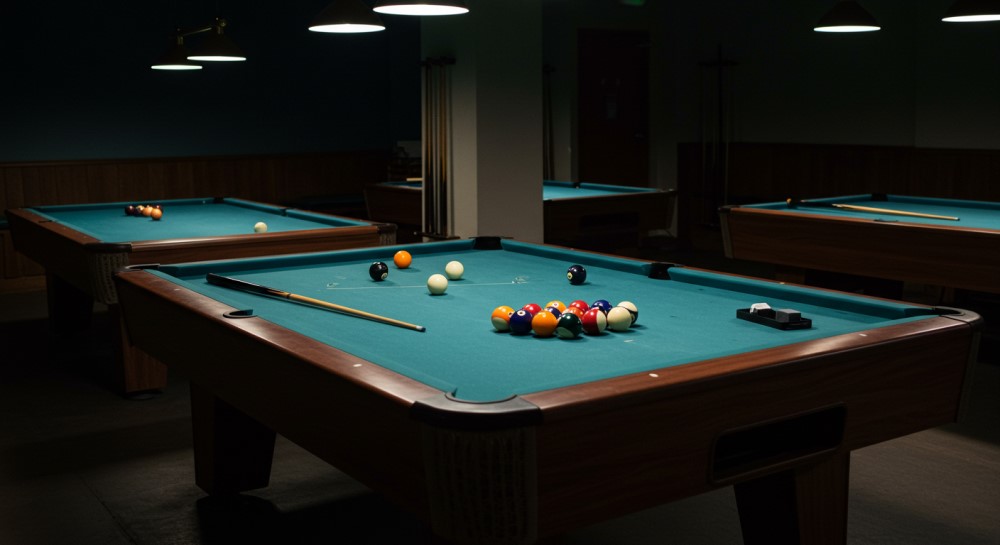
Positional play is chess meets ballet: delicate distances, precise timing. Control pace, and you dictate the flow of the rack.
Drills That Build Touch
-
Coin zones: Place coins at varying distances along the table. Roll the cue ball off one rail, attempting to finish dead on each coin. Record hit‑rate percentages.
-
Lag challenge: From the head string, strike the cue ball to the foot rail and back, aiming to stop within a chalk square near the baulk line. Adjust stroke length until you can land within the square eight times out of ten.
-
Three‑speed series: Pot the same straight‑in shot three ways—stun stop, slow follow, and power draw—without altering accuracy. The discipline of varying speed while retaining precision tightens neuromuscular control.
Consistency here unlocks crafty pattern routes that seem effortless to spectators yet felt completely logical to you.
6. Spin With Intent: From Subtle Top to Swashbuckling Side
Cue‑ball spin separates competent potters from true table architects. Treat each type as a specialised tool.
Vertical Axis Control
-
Topspin (12 o’clock): Use partial top (10:30) for gentle roll‑throughs; full top for long down‑table chases or splitting clusters.
-
Backspin (6 o’clock): Draw back a few inches for shape on a nearby ball, or punch a deep draw to clear pockets for a break‑ball. Backspin requires clean tip‑to‑ball contact—ensure ample chalk.
Horizontal Axis Tweaks
-
Running side: When you strike the cue ball with side in the same direction it will rebound, it lengthens the path after cushion contact. Handy for three‑rail positional shots that need an extra nudge.
-
Check side: Opposite to running; it shortens the path, pulling the cue ball up‑table sooner—excellent for avoiding traffic.
Building Spin Dexterity
Practise a “clock‑face” drill: mark imaginary hours on the cue ball. Take fifteen shots striking at different ‘times,’ observing resulting paths. Document how cloth condition, ball cleanliness, and cue tip softness impact reaction. Over weeks, you’ll instinctively dial in the correct tip offset for every scenario.
7. Transform Your Break Shot Into a Controlled Explosion
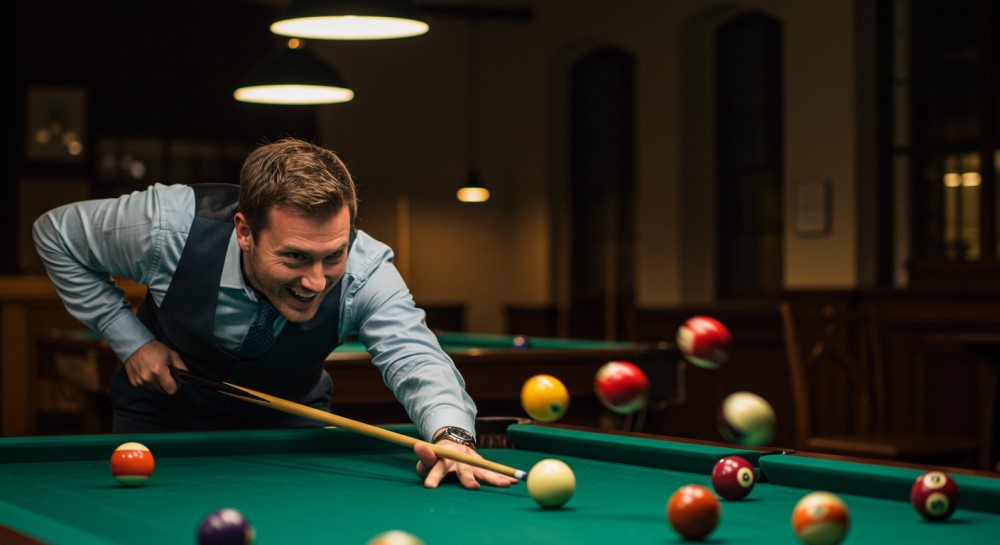
The break isn’t just about fireworks; it sets the strategic tone for the frame.
Optimising Break Mechanics
-
Cue‑ball placement: In eight‑ball, breaking from slightly off‑centre often sinks a corner ball and keeps the cue ball mid‑table. In nine‑ball, experiment with head‑spot breaks to track the one‑ball toward the corner.
-
Acceleration curve: Don’t swing from the shoulder like a lumberjack. Build speed smoothly, accelerating through the last 10 cm of follow‑through.
-
White‑ball control: Aim to finish with the cue ball in the table’s central third. Wild breaks that fling the cue ball off the table gift ball‑in‑hand opportunities.
Structured Break Practice
Rack ten sets, focusing solely on whether you (a) pot on the break, (b) control the white, and (c) spread balls evenly. Log your success for each metric, and tweak stance width, cue height, or tip offset until at least two metrics succeed in seven out of ten racks.
8. Blend Attack and Defence: The Art of Tactical Pool
A fearless potter who ignores defence will lose to a cunning strategist who knows when to refuse marginal pots.
Recognising Tactical Moments
-
Risk‑reward ratio: If a shot is below 40% likely (by your ability) and a miss leaves your opponent a clear run, lean defensive.
-
Cluster locks: When two or more of your opponent’s balls block each other, play a containing safety. They’ll spend moves untangling while you gain table control.
-
Two‑way escapes: If you must attempt a tricky cut, see whether a miss can still land the cue ball behind traffic. Planning these “fail‑safe” results cushions against disaster.
Practising Defence
Set up scenarios where potting is illegal—you must leave a tough shot. Grade each leave’s difficulty for your hypothetical opponent. Try to average a rating of 4/5 ‘toughness’ before allowing yourself to switch back to potting practice. The exercise rewires your brain to respect defence as an offensive weapon.
9. Harden Your Mental Edge for Match Pressure

Technical skill carries you to the hill; mindset pushes you over it.
Simulation Strategies
-
Shot clock drills: Give yourself 30 seconds per shot. The ticking limit mimics tournament clocks, training you to trust routines rather than second‑guess.
-
Ghost races: Play ‘ghost’ nine‑ball—break, then run the table without opponent interference. Miss and the ghost wins. Race to seven. The solitude highlights mental lapses quickly.
-
Pressure ladder: Rank five practice partners by difficulty. Play the easiest first; if you win, climb to the next. Lose and drop one rung. This gamifies pressure and demands focus across varied styles.
Thought Management
Swap negative refrains (“I always jaw those”) for specific cues (“Smooth follow‑through. Eyes still”). Positive triggers keep adrenaline manageable and practical technique intact.
10. Review, Reflect, and Set Micro‑Targets
Improvement grows in the overlap between practice and analysis. Treat yourself like a coach would.
Recording Tactics
-
Video review: Place your phone on a tall tripod behind the head string. Capture a wide shot of the entire playing surface.
-
Highlight reel: After each session, isolate three successful patterns and three errors. Annotate why each occurred—poor speed, rushed routine, mis‑read angle, nerves.
-
SMART micro‑goals: Transform weaknesses into targets such as “Complete 50 full‑table lag drills this week” or “No missed pots inside two diamonds for three straight sessions.”
Revisit these micro‑goals monthly, increasing difficulty as they become habitual. This systematic refinement compounds faster than random table time.
Bringing It All Together
Improving at American pool is a marathon, not a sprint. Each tip above slots into one of three pillars:
-
Technique – stance, cue action, spin, break mechanics
-
Tablecraft – angle reading, speed control, tactical play
-
Mindset – routines, pressure handling, reflective practice
Rotate practice blocks so each pillar gets attention every week. For example:
| Day | Focus | Sample Drills |
|---|---|---|
| Monday | Technique | 30 stop‑shots, 30 draw shots, 15 break reps |
| Wednesday | Tablecraft | 45 coin‑zone speed drills, 30 rail‑first kicks |
| Friday | Mindset & Matches | Race‑to‑seven ghost set, video review, goal logging |
Variety prevents burnout and ensures well‑rounded growth. Within a month, friends will notice cleaner cueing and sharper pattern choices; within six months, your league averages should climb noticeably.
Ultimately, mastery grows from deliberate practice woven with honest reflection. So chalk up, trust the process, and savour each incremental gain. When the last ball of a pressure frame drops with silky confidence, you’ll know these 3,000 words were well spent.
Conclusion: Tips to Improve Your American Pool Game
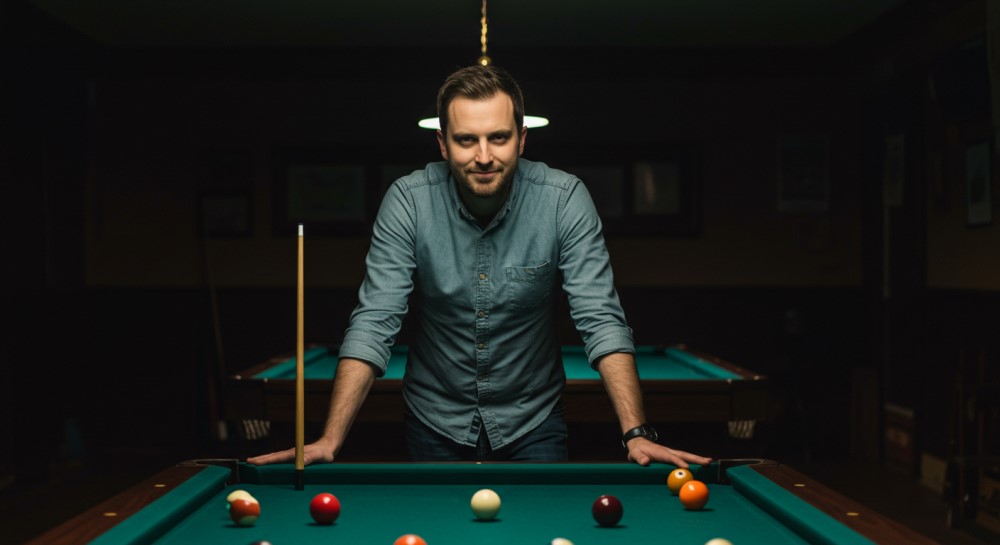
Improving your American pool game doesn’t always require flashy trick shots or hours of practice every day. Often, it comes down to refining the basics, understanding common errors, and building consistent habits. Many of the most effective improvements stem from avoiding the simple but critical mistakes pool players make—like poor cue control, rushed decisions, or emotional play.
Each of the tips we’ve explored is designed to target a core aspect of your performance—from your stance and cue choice to your shot planning and mental discipline. When practised regularly, these adjustments create a stronger foundation, making every pot more deliberate, every miss more informative, and every win more deserved.
Remember: progress in pool is about patience and awareness. Track your development, review your matches, and aim for gradual improvement over time. You don’t need to be a professional to play with confidence and control—you just need to stay curious, open to feedback, and committed to the process.
So next time you step up to the table, take a moment to pause, line up, and play with purpose. With these tips in mind, you’ll be one step closer to becoming the kind of player others look up to—and the one who consistently keeps their cool under pressure.
